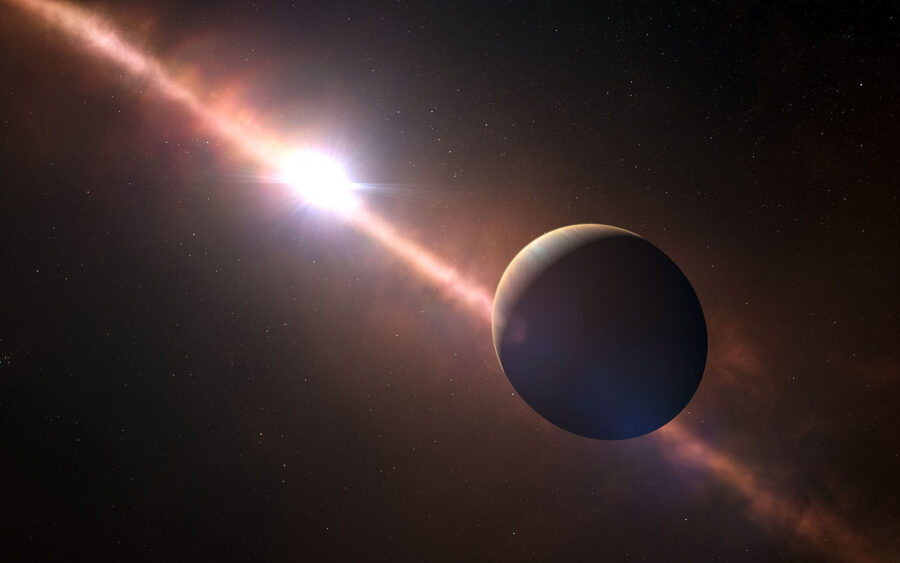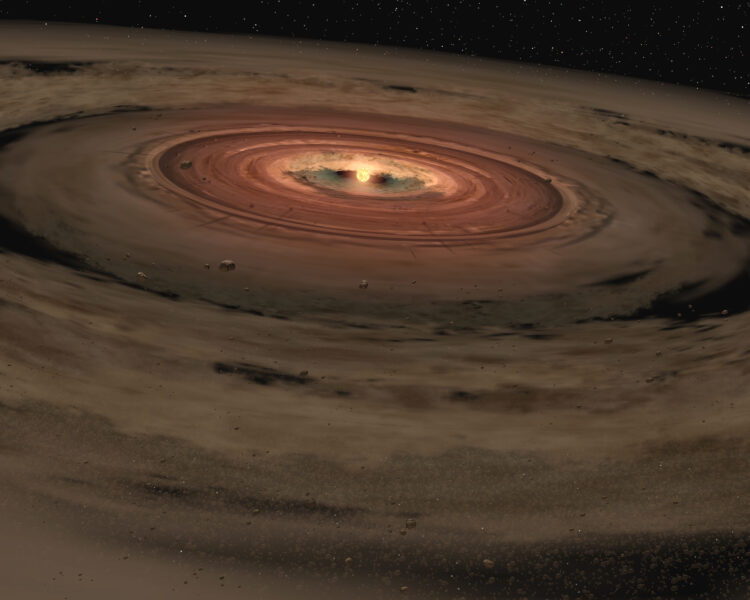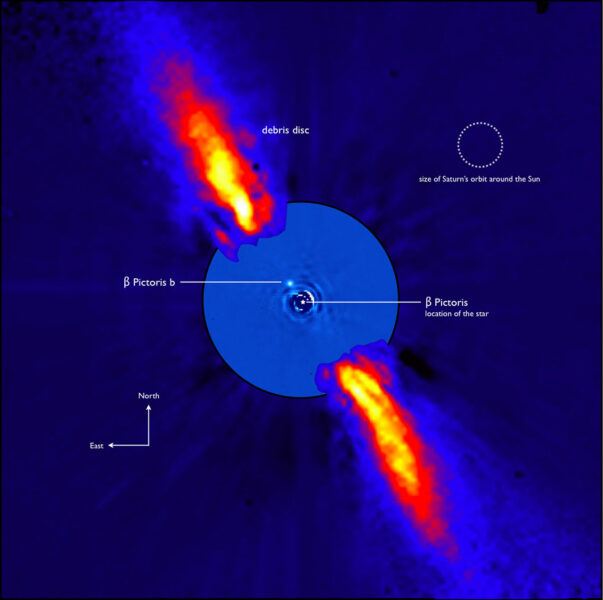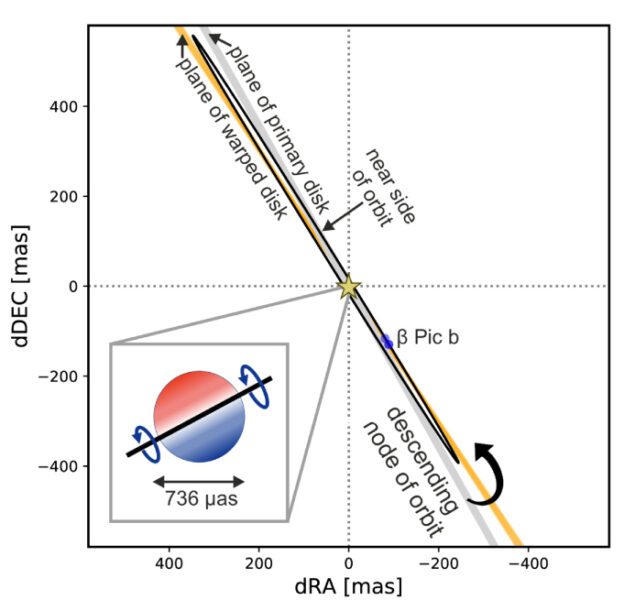Not all planets orbit in the same direction as their stars rotate. A nearby counterexample sheds light on the origin of misaligned orbits.

ESO L. Calçada / N. Risinger / skysurvey.org
The planets in our solar system all orbit in roughly the same direction as the Sun spins — but this isn’t true for all planetary systems! Recent measurements of the spin angle of a nearby, planet-hosting star provide new insight into how solar systems form.
The Birth of a Solar System
In a widely accepted theory for solar system formation, a star and its planets are born from the same swirling nebula of gas and dust. As the nebula collapses, it forms a spinning star at its center, with the remaining matter flattening into a rotating disk around the newborn star. Planets later form within this disk.
In this picture, conservation of angular momentum suggests that the spin axis of a star should be aligned with the orbital angular momentum vectors of its planets — a state known as spin–orbit alignment.

NASA / JPL-Caltech
This is true in our solar system: our planets’ orbits are aligned to within 7° of the Sun’s spin. But roughly a third of the planets we’ve measured in other systems have significant misalignments — ranging from slightly tilted orbits to orbits that are fully the opposite direction of their star’s spin.
Explaining Crooked Paths
There are two possible explanations for these misaligned orbits:
- A star’s spin and its planet-forming disk might be misaligned from the start — perhaps due to effects like turbulence or dynamical interactions in the star’s birth environment.
- Planet orbits and stellar spin start out aligned, but some planets get scattered or nudged onto misaligned orbits after they form.

ESO / A.-M. Lagrange et al.
So far, we’ve only been able to measure spin–orbit alignment angles for short-period hot Jupiters, planets that we already suspect may have formed elsewhere and been driven inward onto their current close orbits. These planets could easily have had their orbits misaligned during this migration — which lends credence to the second explanation above.
But to confirm that this explanation fits, we’d also need to show that the spin–orbit alignments of long–period planets — which are less likely to have been perturbed over their lifetimes — are typically aligned.
In a new study, a team of scientists led by Stefan Kraus (University of Exeter, UK) have now made the first measurement of the spin–orbit alignment of a directly imaged, wide-orbit exoplanet: β Pictoris b.
Confirmation from a Wide Orbiter
Located just 60 light-years away, the recently formed star β Pictoris hosts a roughly 13-Jupiter-mass exoplanet — β Pictoris b — that orbits with a semimajor axis of 10.6 a.u. within a young debris disk that surrounds the star.

Adapted from Kraus et al. 2020
Kraus and collaborators conduct high spectral resolution observations of β Pictoris with the Gravity instrument on the Very Large Telescope Interferometer in Chile, identifying the angle of the star’s spin from subtle signatures in its spectrum. From these measurements, the authors establish that β Pictoris’s stellar spin, its debris disk rotation, and its planet’s orbit are all aligned to within roughly 3°.
Kraus and collaborators’ results support the idea that solar systems initially form with aligned stellar spin and planet orbits; misalignments are introduced only later as planets migrate. Additional observations of wide-orbit planets will be needed to confirm this picture — but we can hope to gather more in the future using the techniques demonstrated in this study!
Citation
“Spin–Orbit Alignment of the β Pictoris Planetary System,” Stefan Kraus et al 2020 ApJL 897 L8. doi:10.3847/2041-8213/ab9d27
This post originally appeared on AAS Nova, which features research highlights from the journals of the American Astronomical Society.
 1
1









Comments
Lance
July 7, 2020 at 11:16 am
Hi when I look at the night stars I see them moving around dancing up and down not only by them selfs but with others but never have I herd any person saying this. am I seeing things ????
You must be logged in to post a comment.
You must be logged in to post a comment.